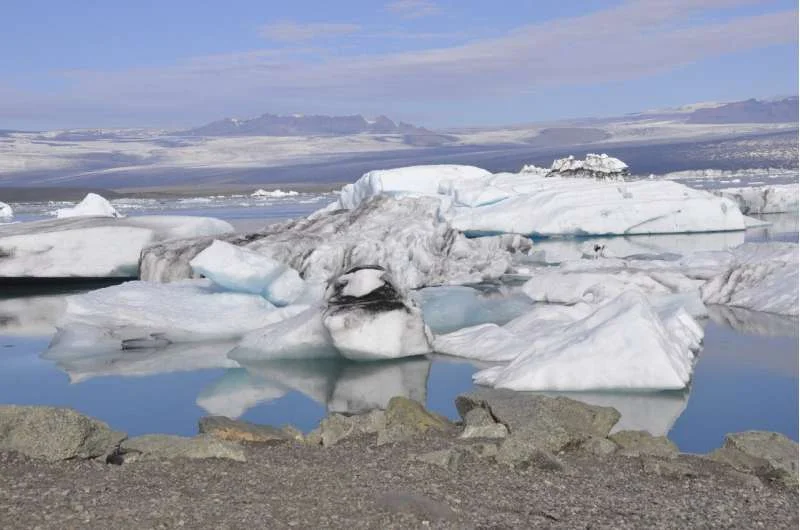After comparing current climate trends with the planet’s climate 3 million years ago, an international team of scientists concluded that most of Earth’s near-surface permafrost could disappear by 2100. The team found that the amount of near-surface permafrost may have decreased by 93% compared to the pre-industrial period from 1850 to 1900. That’s according to the most extreme warming scenario in the latest report from the Intergovernmental Panel on Climate Change.
By 2100, near-surface permafrost in the upper 10-13 feet of soil may exist only in the East Siberian Range, the Canadian Arctic Archipelago, and northern Greenland; just like in the warm period in the mid-Pliocene. Study published on August 28 Proceedings of the National Academy of Sciences, led by Donglin Guo from the Chinese Academy of Sciences and Nanjing University of Information Science and Technology. Scientists from the USA, Russia, England, Germany, Japan, Canada, the Netherlands, France and Sweden participated in the research.
“Our study shows a significantly smaller area of near-surface permafrost in the geological past under climatic conditions similar to those expected if global warming continued,” the authors write. Co-authors include Professor Emeritus Volodymyr Romanovsky of the University of Alaska Fairbanks Geophysical Institute. Romanovsky is a leading scientist in permafrost research.
“The loss of this much near-surface permafrost over the next 77 years will have far-reaching consequences for human livelihoods and infrastructure, the global carbon cycle, and surface and subsurface hydrology,” Romanovsky said. “This study is another alarm signal about what is happening to Earth’s climate.”
The climate simulation of the mid-Pliocene warm period is similar to the climate projection for the end of this century under the fossil fuel development pathway in the latest IPCC report. This path is the darkest among the five paths presented for the future of society.
Modeling for the mid-Pliocene warm period and estimates of permafrost extent in 2100 focus only on near-surface permafrost, which is less resilient to climate warming than deep permafrost. Ten computer models predict that Earth will lose approximately 77% of its near-surface permafrost by 2100 if surface air temperature increases by 13.5°F, compared with 1995-2014, according to the IPCC’s fossil fuel development pathway.
The authors of the paper decided to compare the projected future of the Earth with the warm period in the middle of the Pliocene, which occurred about 3 million years ago, since this is the last period of sustained global warming in the geological history of the planet. .
Scientists have little direct knowledge of permafrost in the Northern Hemisphere during the mid-Pliocene warm period. To overcome this, they reconstructed surface air temperature records by analyzing other factors such as vegetation composition and soil properties. Based on this representative evidence, they predicted that permafrost would spread during the warm period in the mid-Pliocene.
Using computer simulations, they determined that the global average annual surface temperature during that period was 5-6°F higher than in the pre-industrial period. It also showed that temperatures in the Arctic regions were almost 13° higher. The absence of permafrost is also supported by the marine fossil record from northwestern Alaska, the paper says.
The authors add that the simulated winter and summer temperature and precipitation variables that are likely to have the strongest impact on permafrost stability appear similar for the mid-Pliocene and the years 2100 and 2200. Examining the distribution of warm permafrost and related climate factors in the mid-Pliocene “can improve our understanding of the extent, dynamics, and uncertainty of permafrost loss in a future warmer climate,” the authors write.
“Based on our findings, the future of near-surface permafrost in the Northern Hemisphere looks bleak,” the authors write. “Continued climate warming and the resulting degradation of near-surface permafrost may cause changes in the environment and environmental conditions that humans have not yet experienced, making it necessary to further emphasize the importance of permafrost degradation.” Source
Source: Port Altele
